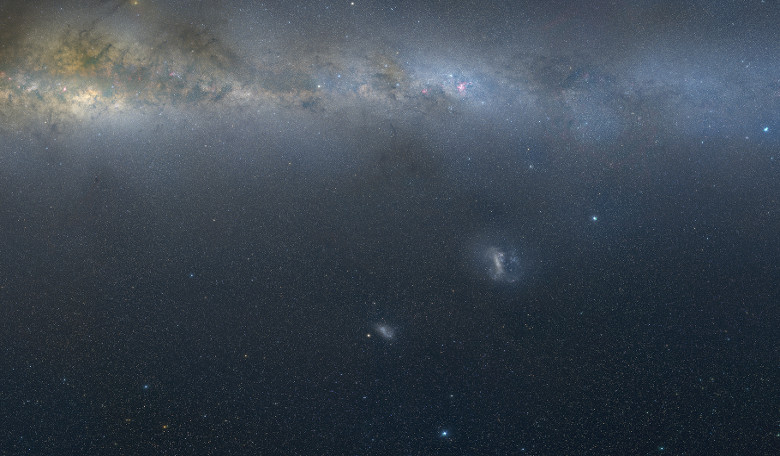Astronomers have found that the Large Magellanic Cloud, one of the closest neighbours to the Milky Way, is not yet finished with making stars. Not only that, but the stars are being formed in an unlikely part of the galaxy.
The Large and Small Magellanic Clouds (LMC and SMC, respectively) are a pair of gas-rich galaxies that are satellites of the Milky Way, located in a configuration that is rarely found around Milky-Way type galaxies. The LMC's present irregular appearance is likely the result of tidal interactions with both the Milky Way and the SMC, however despite their close proximity, the complex interplay between the three galaxies is still poorly understood.
Now, an international team of scientists who have been searching for recent star formation in the far outskirts of the LMC, which extends to some 9 kilo parsecs in radius, have found evidence for recent star formation where only an ageing population of stars was known to exist.
The six stars detected by the team, whose lead author on the research paper is C. Moni Bidin from the Universidad Católica del Norte, Chile, are young, (10 - 15 Myr), main sequence stars, that have formed in a ring-like configuration around the outskirts of the LMC.
By comparing the velocities of these stars with those of a disk model, calculations by the team suggest that the stars were formed in situ and were possibly created by an off-centre collision between the SMC and the LMC’s disk.
This discovery suggests that the interaction between the two clouds and our Galaxy is strong enough to trigger recent star formation in certain regions of this multifarious structure, which in the last decade has been found to include a complex ensemble of gaseous system; these include a bridge between the clouds – a site of star formation that links both the LMC and SMC and was detected as early as 1957, the Magellanic stream, a wide filament of neutral gas that spans over a 100 degrees across the sky and the Leading Arm (LA). This is a fragmented, wide feature leading the orbit of the Clouds that is suggested to have been stripped from the SMC around 1.5 billion years ago.
The team also found three similarly hot, young, main sequence stars in the foreground to the LMC, however these are suggested to be runaway stars from the Galactic disc.
For more information on this discovery, see: https://arxiv.org/pdf/1612.03072.pdf











